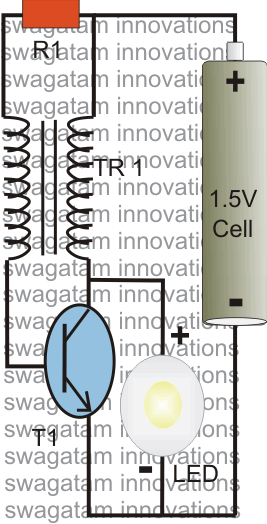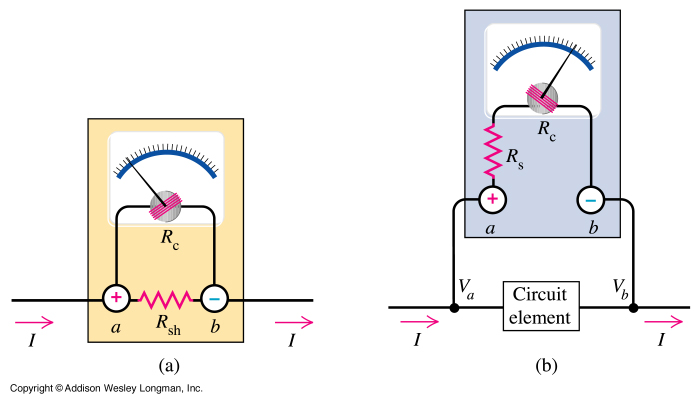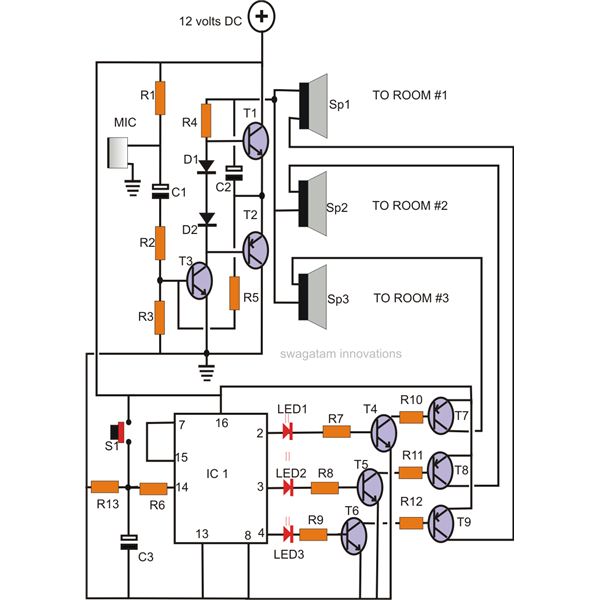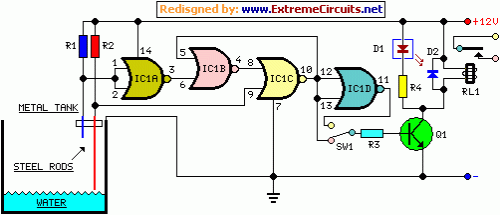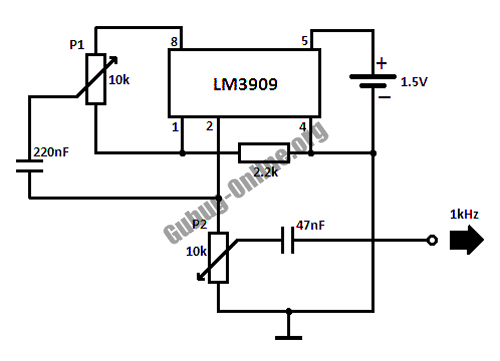
Exit Delay For Burglar Alarms Circuit
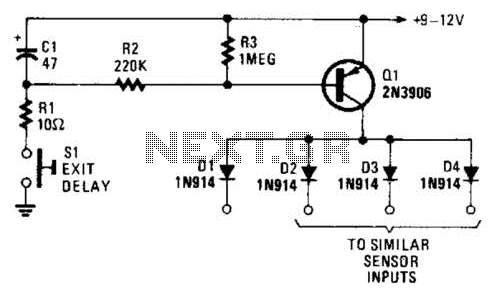
Depressing SI charges CI to the supply voltage. This biases Q1 on via bias resistors R2 and R3. A voltage is available for the duration of the delay period to hold off the alarm circuit. CI can be increased or decreased in value to alter the delay times.
The circuit operates by utilizing a capacitor (CI) that charges to the supply voltage when switch SI is depressed. This action effectively biases transistor Q1 on, facilitated by bias resistors R2 and R3, which are configured to provide the necessary base current to Q1. The charging of CI creates a voltage that remains present throughout the delay period, which serves to temporarily disable the alarm circuit, preventing it from triggering during this designated time frame.
The delay time can be adjusted by modifying the value of capacitor CI. Increasing the capacitance will result in a longer delay, as it takes more time to charge to the supply voltage. Conversely, decreasing the capacitance will shorten the delay time, allowing the alarm circuit to activate more quickly after SI is released. This flexibility in timing is essential for applications where precise control over alarm activation is required.
Resistors R2 and R3 play a crucial role in determining the biasing conditions for transistor Q1. The values of these resistors can also be adjusted to fine-tune the biasing level, impacting the overall response time of the circuit. Proper selection of these components ensures that the transistor operates within its optimal range, thus maintaining reliability and efficiency in the circuit's performance.
In summary, this circuit design allows for adjustable delay times through the manipulation of capacitor CI and the biasing resistors, facilitating effective control over the alarm system's activation. Depressing SI charges CI to the supply voltage. This biases Ql on via bias resistors R2 and R3. A voltage is available for the duration of the delay period, to hold off the alarm circuit. CI can be increased or dccrcascd in value to alter the delay times. 🔗 External reference
The circuit operates by utilizing a capacitor (CI) that charges to the supply voltage when switch SI is depressed. This action effectively biases transistor Q1 on, facilitated by bias resistors R2 and R3, which are configured to provide the necessary base current to Q1. The charging of CI creates a voltage that remains present throughout the delay period, which serves to temporarily disable the alarm circuit, preventing it from triggering during this designated time frame.
The delay time can be adjusted by modifying the value of capacitor CI. Increasing the capacitance will result in a longer delay, as it takes more time to charge to the supply voltage. Conversely, decreasing the capacitance will shorten the delay time, allowing the alarm circuit to activate more quickly after SI is released. This flexibility in timing is essential for applications where precise control over alarm activation is required.
Resistors R2 and R3 play a crucial role in determining the biasing conditions for transistor Q1. The values of these resistors can also be adjusted to fine-tune the biasing level, impacting the overall response time of the circuit. Proper selection of these components ensures that the transistor operates within its optimal range, thus maintaining reliability and efficiency in the circuit's performance.
In summary, this circuit design allows for adjustable delay times through the manipulation of capacitor CI and the biasing resistors, facilitating effective control over the alarm system's activation. Depressing SI charges CI to the supply voltage. This biases Ql on via bias resistors R2 and R3. A voltage is available for the duration of the delay period, to hold off the alarm circuit. CI can be increased or dccrcascd in value to alter the delay times. 🔗 External reference
